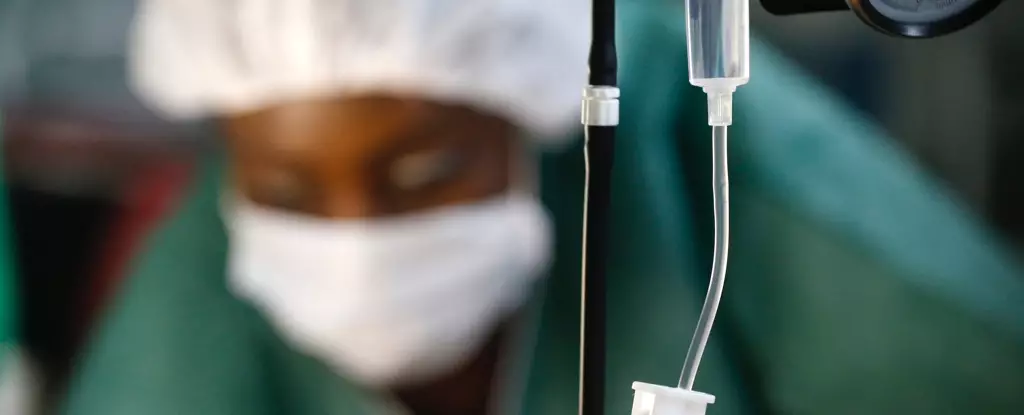In recent weeks, the Democratic Republic of Congo (DRC) has become the epicenter of a perplexing health crisis, with reports of a “mystery disease” claiming the lives of between 67 and 143 individuals within a range of just two weeks. The complexities surrounding this outbreak have raised significant public health concerns and put a spotlight on the challenges faced by health officials in the region. Characterized by flu-like symptoms, including fever, headache, cough, and anemia, this disease predominantly affects women and children, highlighting a vulnerable demographic often at the mercy of health crises.
As epidemiologists scramble to provide answers, the urgency in identifying the disease and its etiology is paramount. Nonetheless, the challenges inherent in this investigation cannot be understated. The DRC’s health infrastructure, already frail, is further hindered by inadequate diagnostic testing capabilities and limited access to quality laboratory services.
In low-income contexts, such as the DRC, the capacity of clinical laboratories to detect and identify pathogens is frequently restricted to common infections. Local laboratories often lack the advanced technology necessary for comprehensive testing, resulting in significant limitations on their ability to confirm the presence of rare illnesses. Consequently, problems arise in the basic logistics of collecting, transporting, and processing samples, which are compounded by diagnostic bottlenecks.
When investigating potential cases that fall outside the purview of common diseases like malaria or dengue, local health systems may find themselves sorely lacking. Specialized testing, which may include genetic sequencing or other advanced methodologies, often requires samples to be sent to more sophisticated laboratories—sometimes abroad. This not only presents logistical issues but also raises critical ethical concerns regarding the international sharing of biological samples. The fear of exploitation in terms of resource sharing can complicate necessary collaborations that could lead to vital discoveries and effective public health responses.
Determining the full scale of this mystery disease is further complicated by systemic issues in the DRC’s healthcare system. Access to healthcare services is severely restricted, particularly in remote regions where healthcare facilities are sparse and often understaffed. With the nation grappling with fewer than two doctors per 10,000 people, the ability to detect and manage outbreaks becomes increasingly precarious.
Additionally, the reality is that many infected individuals may not seek medical attention due to distance, cost, or a lack of available services. In such under-resourced settings, the likelihood that cases will go unreported or undiagnosed is alarmingly high. This results in significant data gaps, ultimately undermining efforts to combat the disease effectively. As a result, critical decisions regarding public health interventions are made with incomplete information, making it difficult to gauge the true threat posed by this outbreak.
This incident in the DRC is not an isolated concern. The increasing frequency of emerging infectious diseases worldwide is alarming, with factors such as climate change, urbanization, and deforestation playing substantial roles in this trend. These developments facilitate the “spillover” of pathogens from animal populations to humans, making global disease surveillance more crucial than ever.
However, the landscape of global health surveillance remains disjointed and uncoordinated. In many low-income nations, limited resources, inadequate training, and poor reporting standards hinder timely detection and response capabilities. There is often a lag between infection, diagnosis, and report, allowing outbreaks to spiral out of control before comprehensive action can be taken to address them.
In light of the urgency surrounding infectious disease outbreaks, initiatives like the World Health Organization’s (WHO) 7-1-7 initiative emerge as the groundwork for progress. Designed to enhance the capacity for rapid detection and response, this strategic framework aims to establish timelines that could significantly mitigate the impact of emerging pathogens.
Moreover, integrating existing surveillance mechanisms is critical to improving healthcare outcomes. The WHO’s Integrated Disease Surveillance and Response (IDSR) initiative has had some success in Africa, yet many challenges persist, including technological limitations and financial constraints. As diseases do not respect borders, global collaborative efforts—including initiatives aimed at bridging human, animal, and environmental health—will be essential in curbing future pandemics.
Ultimately, the path forward requires global cooperation, enhanced infrastructure funding, and an unwavering commitment to improving health outcomes in the most vulnerable regions. Without such advancements, the threat of undetected and unchecked infectious diseases looms large, reminding us all that the next pandemic could be on the horizon, waiting for its moment to strike.


Leave a Reply